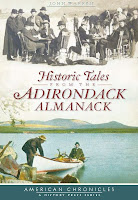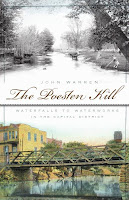 Abenaki is a generic term for the Native American Indian peoples of northern New England, southeastern Canada, and the Maritimes. Members of the Abenaki Watso family will share the traditions, culture, and heritage of their ancestors at an upcoming event at the Adirondack Museum this Saturday, July 11, 2009. These Native Peoples are also known as Wabanaki (Eastern Abenaki – Maine and the Canadian Maritimes) or Wobanakiak (Western Abenaki – New Hampshire, Vermont, and southeastern Canada). In the Native language Wobanakiak translates roughly to mean “People of the Dawn.”
Abenaki is a generic term for the Native American Indian peoples of northern New England, southeastern Canada, and the Maritimes. Members of the Abenaki Watso family will share the traditions, culture, and heritage of their ancestors at an upcoming event at the Adirondack Museum this Saturday, July 11, 2009. These Native Peoples are also known as Wabanaki (Eastern Abenaki – Maine and the Canadian Maritimes) or Wobanakiak (Western Abenaki – New Hampshire, Vermont, and southeastern Canada). In the Native language Wobanakiak translates roughly to mean “People of the Dawn.”
A majority of the Watso family who will demonstrate or present at the Adirondack Museum are from the Odanak reserve in the province of Quebec. The Abenaki Nation at Odanak, historically called the St. Francis, is now called the Odanak Band by the Canadian government.
“Abenaki Day” will feature demonstrations of traditional skills from 10:00 a.m. until 4:00 p.m. The demonstrations will include: sweet grass and black ash basket making by Barbara Ann Watso- bead work with Priscilla Watso- pounded black ash splint making with John Watso and Martin Gill- and traditional wood carving by Denise Watso.
Rejean Obomsawin will share traditional Abenaki legends that have been passed down by the elders at 11:30 a.m. and 2:30 p.m. Rejean is a singer, drummer, and guide at the Musee des Abenaki at Odanak.
Jacques T. Watso will offer traditional Abenaki singing and drumming at 10:30 a.m. and 2:30 p.m.
Cultural anthropologist Christopher Roy will present a program entitled “Abenaki History in the Adirondacks and in the Adirondack Museum” at 12:30 p.m. and 3:30 p.m. Drawing on the museum’s Abenaki collections, Roy will share the findings of his research on the history and contemporary lives of Abenaki people in the Adirondacks and throughout the Northeast.
Christopher Roy is completing a PhD program at Princeton. Of particular interest to his research are the histories of residence off-reserve, questions of law and belonging, as well as the work of family historians in understanding Abenaki pasts, presents, and futures.
The Watso family has strong ties to the Adirondack region. Their ancestors include Sabael Benedict and his son Elijah, Abenaki men familiar to early settlers and explorers of the region, and Louis Watso an Abenaki man well known in the southern Adirondacks in the latter half of the 19th century.
Descendants Sabael Benedict and Louis Watso lived throughout the region, some as full-time residents and others moving back and forth between villages like Lake George and Saratoga Springs and Odanak, an Abenaki village on the lower St. Francis River in Quebec.
This branch of the Watso family also descends from John and Mary Ann Tahamont, basket makers who spent many summers at Saranac Lake around the turn of the last century.
Photo: Chief Richard O’Bomsawin and Councillor Jacques Watso
 For your information comes the following press release issued by the Adirondack Architectural Heritage on the recent election of their Board of Directors:
For your information comes the following press release issued by the Adirondack Architectural Heritage on the recent election of their Board of Directors:








